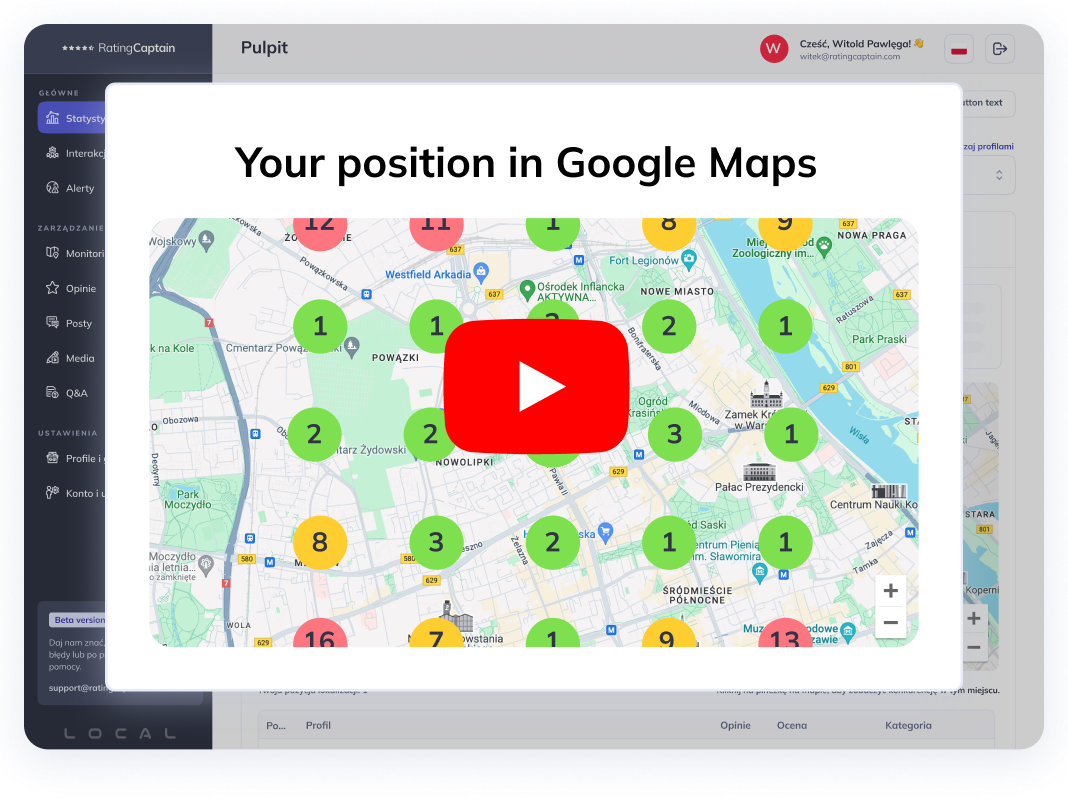

Open Rate Indicator: data and advice - how to improve the open rate in email marketing?

Table of contents
Open rate, which is the message open rate, is one of the most important parameters measuring the effectiveness of your email campaign. Why?
Sending emails is one thing, but reaching recipients and delivering valuable content to them is a completely different matter. That is why it is worth paying attention to open rate, click rate and understanding what affects its level.
In this article, we will try to present you with the most important information about open rate and click rate, while pointing out the most effective ways to increase this measure and some data about it from the last few years, which will help you look at it from a broader perspective.
Read on and discover how to achieve even greater effectiveness in your email marketing activities! At the beginning - a few explanations:
What is the Open Rate and how to calculate it?
What is open rate? The open rate is an expressed in percentages important metric to track when sending emails. It is the percentage of recipients who opened your email after it was sent.
The open rate is calculated by taking the total number of opened messages and dividing it by the total number of sent messages, and then multiplying the result by 100%.
This rate can be used to check how successful a marketing campaign or subject line was for a given sent email.
The higher the open rate, the more likely it is that your messages resonate with the target audience. For example, if you send 1,000 emails and receive 800 opens, then your open rate will be 80%. You can use this information to understand how effective your email campaigns are and improve the effectiveness of the sent campaign in the future.
Why analyze Click Rate and Open Rate of mailing?
Open Rate and Click Rate are important metrics to analyze when evaluating the success of an email campaign. CR - Click Rate, which we have not mentioned yet, is the percentage of those opened emails in which a link in the email was clicked.
Knowing which campaigns have a higher open rate can help in making decisions about what types of content should be included in emails, as well as who should receive them.
Additionally, understanding the click-through rate can provide insights into what types of content and calls to action motivate users to take action.
By analyzing both the open rate and the click rate, marketers can make more informed decisions on how to best adjust their email marketing strategy to achieve maximum impact.
What affects the open rate?
There are many factors that influence the open rate, such as the recipient's address, the sender's identity, and the content of the email itself. The email subject line is also an important factor influencing the open rate, as it serves as an introduction to your message. The preheader, which appears after the subject line, can also have a significant impact on open rates. In short:
- Email subject line and preheader - it is the first thing the recipient sees, and it influences the decision to open the message - stop being boring in your emails, recipients receive dozens of similar ones every day.
- Deliverability - if the email does not reach the recipient's inbox, it will not have a chance to increase the open rate.
- Rate of recipients who received the email - the smaller the ratio of incorrect or inactive addresses, the greater the chance of increasing the open rate.
- Sender's address - recipients trust a well-known brand or company more, which can influence the decision to open the message.
- The email itself - it is worth taking care of the aesthetics and clarity of the email to encourage the recipient to read it (and preferably click on the links).
Analyzing the open rate allows for a better understanding of recipients and their preferences. This enables the implementation of actions aimed at increasing the effectiveness of email marketing campaigns, such as testing different variations of subject lines, preheaders, or email content.
What are the average newsletter open rate?
Considering that email marketing has been the most popular marketing channel for several years, and the average number of promotional messages sent to readers is still increasing, one might assume that the email open rate is decreasing.
However, in most cases, this is not true. Between 2015 and 2018, the average email open rate remained stable, at around 24% worldwide. However, in 2020, the average open rate dropped to 21.3% (a slight decrease compared to 2019).
Does the decrease in the email open rate signal the death of email marketing? Of course not. This is not the first or last time the open rate has dropped.
The good news is that based on historical data, we can see that every time there is a decrease, a strong period of growth always follows. Therefore, we can expect another increase in 2023.
Open Rate and device types - where do users read emails?
Currently, 81% of all email messages are opened and read on mobile devices.
Can you imagine what your readers do when they receive an email from you that is not optimized for mobile devices? They delete it. In fact, 80% immediately delete such emails!
Companies are aware of the importance of email marketing optimization. As many as 9 out of 10 businesses develop a strategy to optimize the layout of their email messages.
Open Rate and days of the week - which days increase the average rate?
When should I send an email campaign? Timing is important for open rates. To know when to send your email campaign, you need to know your audience.
If you sell software, most of your customers will spend time with their families on weekends. This means that sending an email campaign on the weekend would certainly result in fewer opens, if any at all.
So when should you send an email? According to research conducted by Get Response, the best day to send emails for the highest open rate is Tuesday.
Open Rate and email sending time?
Further research shows that subscribers are most likely to read your email message at 10 a.m. when they arrive at work or at 1 p.m. when they catch up on emails after lunch.
As much as 23% of all email opens occur within the first hour after the message is delivered. After 24 hours, the chance of opening an email drops below 1%!
As you can see, choosing the right time to send your email message is crucial for the success of your campaign. If you send it on a day when people are less likely to read your message, you may miss out on many interested customers. So when it comes to sending an email campaign, Tuesday after 1 p.m. is the best choice.
How to increase Open Rate (and campaign success)?
Increasing the open rate requires careful consideration of email marketing tactics. To start, you should test different types of emails on your mailing list to determine which type of message encourages recipients to open messages more frequently.
This can involve testing subject lines, content, visualizations, and more. After identifying an effective email message template, use it for any additional mailings.
Additionally, make sure that the newsletter content is engaging and interesting to the recipient to encourage them to open the message. Track the open rate during this process to determine what works best for your audience.
Make sure that the senders come from trusted domains, and users have the option to unsubscribe from receiving newsletters to ensure they only receive the messages they want to see. By following these strategies, you can increase the open rate and maximize the effectiveness of your email marketing campaigns.
Checklist - how to increase Open Rate:
- Check if the mailing is not going to spam - when sending a message, it is worth paying attention to technical aspects such as deliverability, sender's address, email content, or preheaders.
- Encourage recipients to open the message - the key to increasing the open rate is a properly chosen approach in the subject line. It is worth focusing on content that will interest the recipient and encourage them to open the email.
- Test different variations of email subjects - it is worth experimenting and checking what content attracts recipients. By testing different variations of subject lines (including call to action - CTA) in the email, you can find the optimal way to increase opens.
- Encourage the recipient to open the message already in the inbox - make sure that the subject line is short, clear, and attention-grabbing. You can use the recipient's name or a personal approach, which increases the likelihood of opening the message.
- Take care of the email content - the email content should be well thought out, interesting, and provide value. A well-constructed newsletter or email marketing message should encourage action and generate positive emotions in the recipient.
- Send emails at the right time - research shows that the best time to send emails is Tuesday or Wednesday, preferably between 10 a.m. and 2 p.m. However, it is the recipients who decide when to open the message, so it is worth testing different hours and days of sending.
Please rate this article
Local SEO tool
for agencies
Automate your local SEO
and track Google Maps visibility

